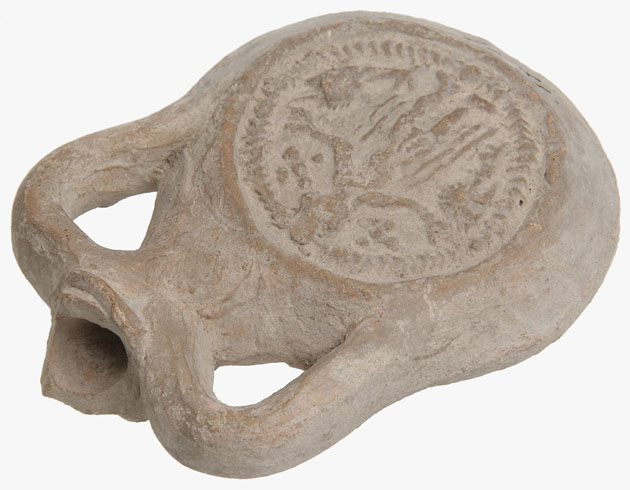Details
- Object type
pilgrim flask
- Place Associated
Africa, Egypt, Lower Egypt, Abu Mina, probably (place associated)
- Date
Coptic / Christian / Byzantine Period, 395-641
- Materials
earthenware
- Dimensions
overall: 94 mm x 70 mm x 25 mm 129.5 g
- Description
-
This earthenware pilgrim flask was given to Glasgow Museums in 1944 by Mrs Marion A. Sinnott on behalf of R Alston Ness.
It is in the form of an ampulla, flat and flagon-shaped with a looped handle on each shoulder. It was used to carry miraculous spring water from the shrine of Saint Menas, at Abu Mena in the desert south of Alexandria. The circular panel of relief decoration on each side depicts the saint with arms outstretched and flanked by two camels. Saint Menas was a soldier in the Roman army who was executed for his Christian faith at Alexandria on 11 November 296. He is said to have asked that his body be placed on a camel and sent out into the desert to be buried at the place the camel stopped. In 324 the Empress Helena built a shrine on his grave, after her daughter had been cured of elephantiasis by drinking water from a nearby spring. This shrine was later extended into a basilica and monastery by the Emperor Arcadius (395–408) and became one of the most popular foci for Christian pilgrimage.
A pilgrim who had completed the pilgrimage to Abu Mena, would have collected precious holy water in this flask from the spring at the saint’s shrine as a means of healing.
- Credit Line/Donor
Gifted by Mrs Marion Sinnott, 1944
- ID Number
A.1944.21.a
- Location
In storage
